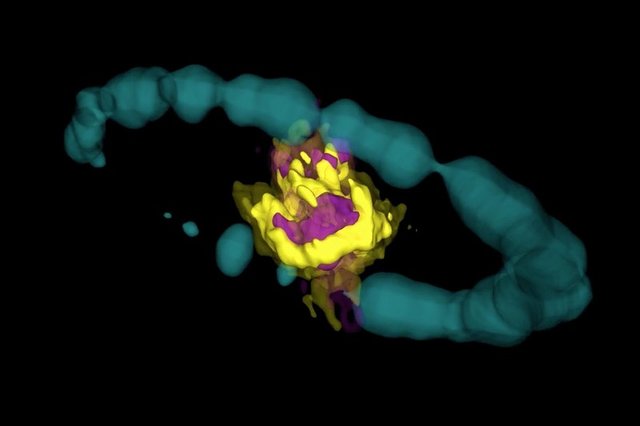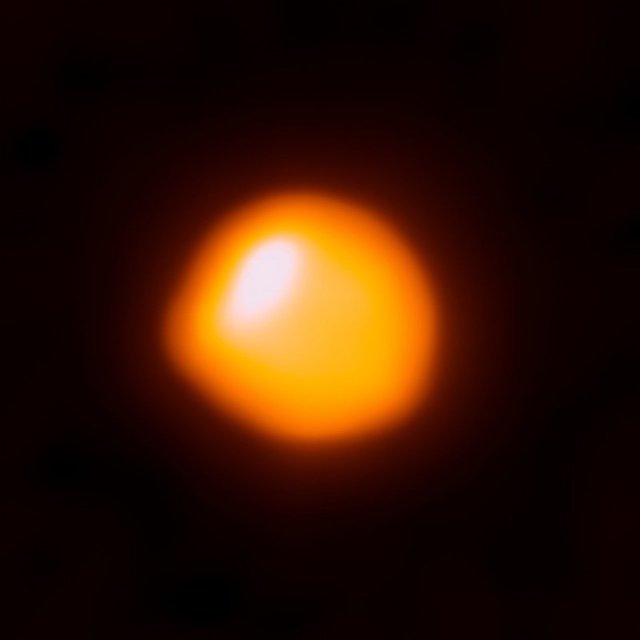Heart of Supernova remnants 30 years after explosion
Supernova - catastophic explosion, marking the death of massive star. Only three such events, seen by the naked eye have been observed in our Milky Way galaxy during the last thousand years. However it is frequent event in the universe, which astronomers can observe using telescopes.
In February of 1987, astronomers observed supernova explosion inside the Large Magellanic Cloud, dwarf galaxy accompanying our Milky Way, and located at about 160 000 light years away. It was an unique opportunity - to continue observations of the explosion remnants over the next 30 years. New instuments developed in 21st century allowed to probe the cooling heart of this supenova, named SN 1987A.
Using the Atacama Large Millimeter/submillimeter Array (ALMA) astronomers could to see fine details of the field, allowed to produce 3-D rendering of newly formed molecules inside the supernova remnant. From these molecules new stars, planets and dust are built.

Image: ALMA (ESO/NAOJ/NRAO); R. Indebetouw; NASA/ESA Hubble
Remnant of Supernova 1987A as seen by ALMA. Purple area indicates emission from SiO molecules. Yellow area is emission from CO molecules. The blue ring is Hubble data that has been artificially expanded into 3-D
Even though the new ALMA observations shed important light on SN 1987A, there are still several questions that remain. Future ALMA observations at different wavelengths may also help determine what sort of compact object—a pulsar or neutron star—resides at the center of the remnant. There is for sure one of these dense stellar objects, but as yet none has been detected.
The Birth of Supernova 1987A: animation depicting the buildup and aftermath of supernova 1987A from NRAO Outreach on Vimeo.
The closest to the Sun candidate for supernova is Betelgeuse - red supergiant star in Orion constellation, located about 640 light-years away. ALMA complex could to obtain the most detailed image of Betelgeuse with giant gas bubble, lifting from its depth.

Image: Atacama Large Millimeter/submillimeter Array
Here is the sizes comparison: Betelgeuse and the Sun

Image: ALMA (ESO/NAOJ/NRAO)/E. O’Gorman/P. Kervella
In the next several thousand years (maybe even tomorrow, who knows) Betelgeuse will collapse and explode becoming third brightest object in the Earth's sky after Sun and full moon.
Source:
Nice post, how long did you spend to make this post from the source?
Thank you. I don't spend time for posting, I enjoy to do it